Comet 2004 q2 Machholz
On August 27, 2004 Don Machholz spied a suspicious 11th magnitude object in Fornax. It soon became obvious that this was a comet that would reach naked eye brightness at the end of the year. Southern hemisphere observers were favoured at first, but as the comet approached perihelion, it rapidly headed northwards, and during much of 2005, it would be a northern hemisphere object only.
My first observation of the comet came on December 16. On this night, the comet was about magnitude 5.2 with a strong central condensation, surrounded by a large coma. A very faint, short tail was also visible in a 10" telescope. Despite the brightness, the comet could not be seen with the naked eye due to light pollution.
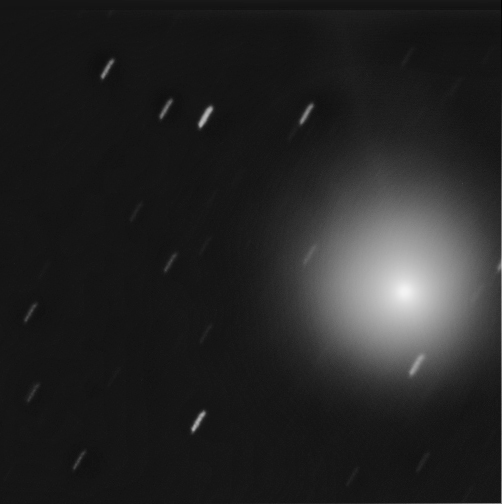
Comet 2004 q4 Machholz, December 16, 2004.
Combination of 10, 1 minute images. SBIG ST-9E CCD.
16" f/10 schmidt-cassegrain with f/6.3 focal reducer.
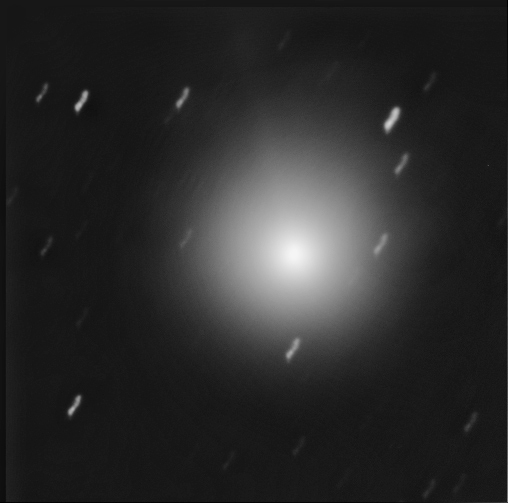
Comet 2004 q4 Machholz, December 16, 2004.
Combination of 10, 1 minute images. SBIG ST-9E CCD.
16" f/10 schmidt-cassegrain with f/6.3 focal reducer.
On December 19, there was little change in the comet. It was slightly brighter and the tail was slightly easier to observe.
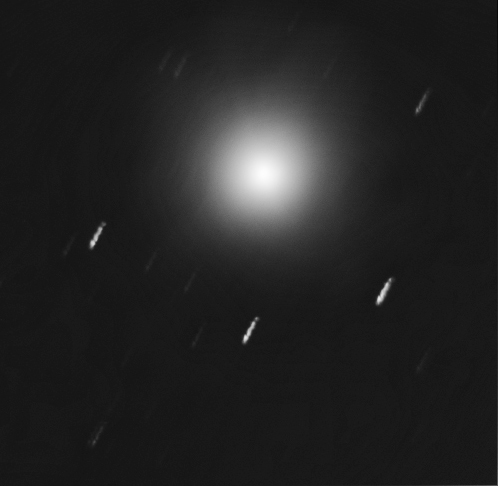
Comet 2004 q4 Machholz, December 19, 2004.
Combination of 10, 1 minute images. SBIG ST-9E CCD.
16" f/10 schmidt-cassegrain with f/6.3 focal reducer.
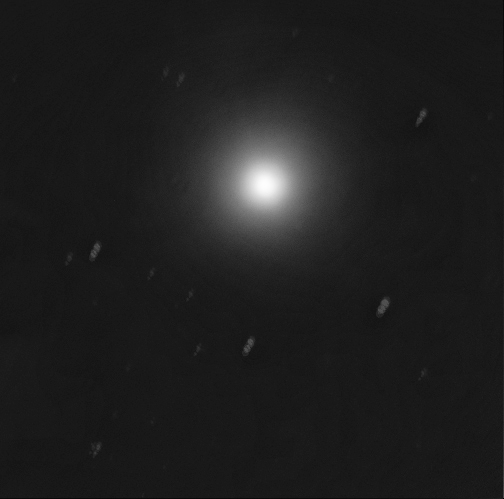
Comet 2004 q4 Machholz, December 19, 2004.
This is the same image as the above, however the individual images are combined with a median filter to minimise the stars.
At the start of January, I travelled to Florida to spend several nights working at the Rosemary Hill Observatory. Here the skies were much darker, with a limiting magnitude of around 6.8. The two main problems with observing from this location were the very large number of planes flying overhead, which made photography difficult, and the thick fog which developed most nights, sometimes as early as 9.30pm!
From the observatory, the comet was a very easy naked eye object as it drifted past the Pleiades. In a 5" telescope, a faint ion tail could be followed for a little over 1 degree and a broard, short dust tail was also visible at a nearly 90 degree angle to the ion tail. Photography was undertaken with a 5" f/5 refractor and a 135mm OM1 lens.
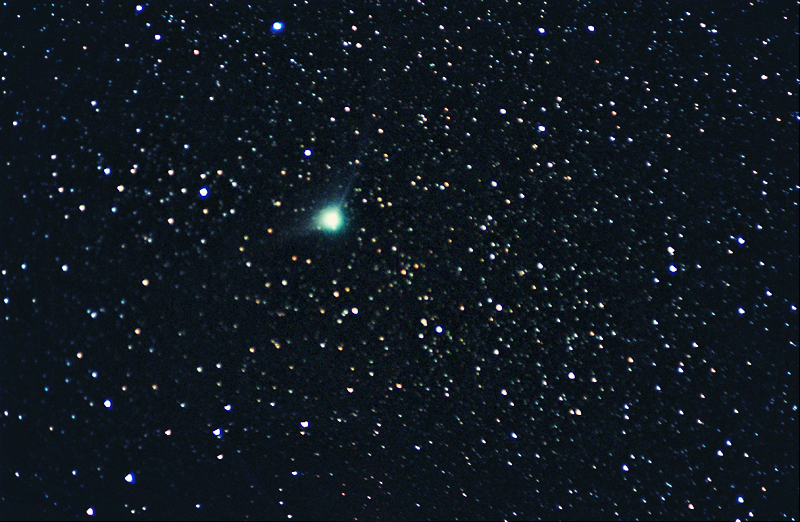
Comet 2004 q4 Machholz, January 2, 2005.
20 minutes exposure. Fuji Superia 200 film
135mm f/2 Olympus lens.
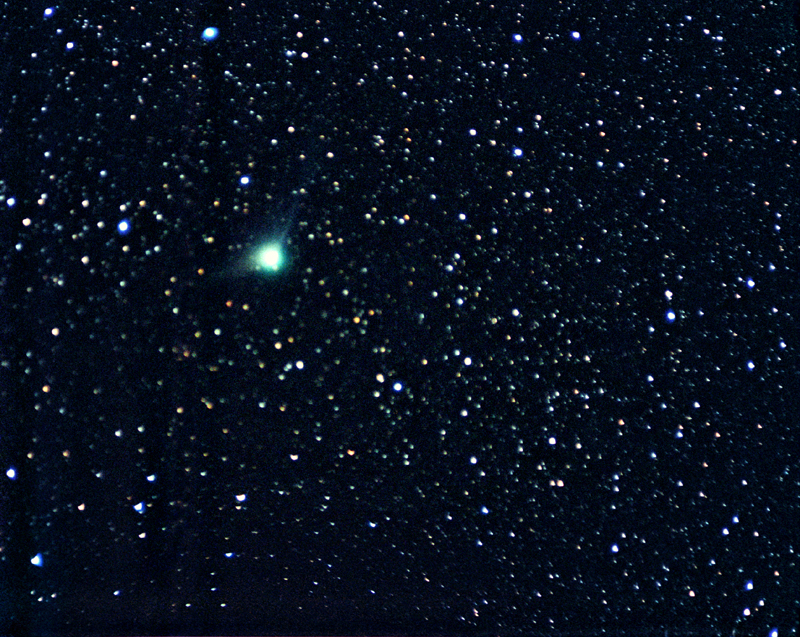
Comet 2004 q4 Machholz, January 2, 2005.
Combination of a 20 minute and a 15 minute exposures. Fuji Superia 200 film
135mm f/2 Olympus lens.
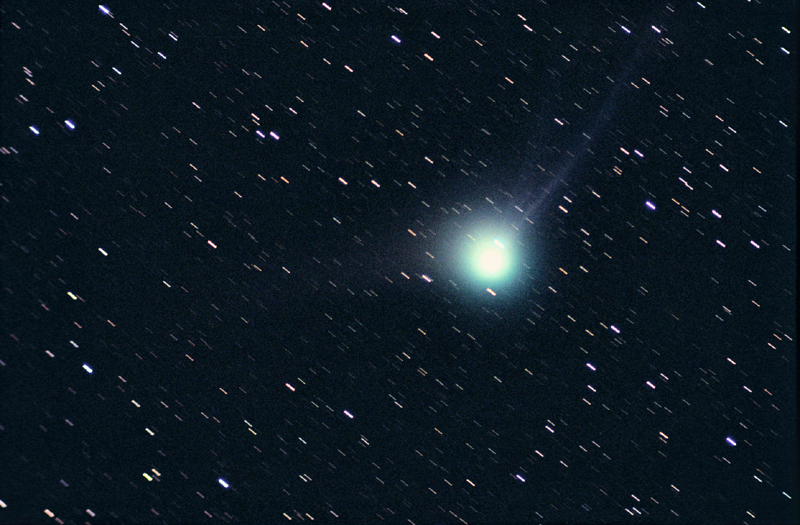
Comet 2004 q4 Machholz, January 2, 2005.
20 minutes exposure. Fuji Superia 200 film
5" f/5 refractor at prime focus.
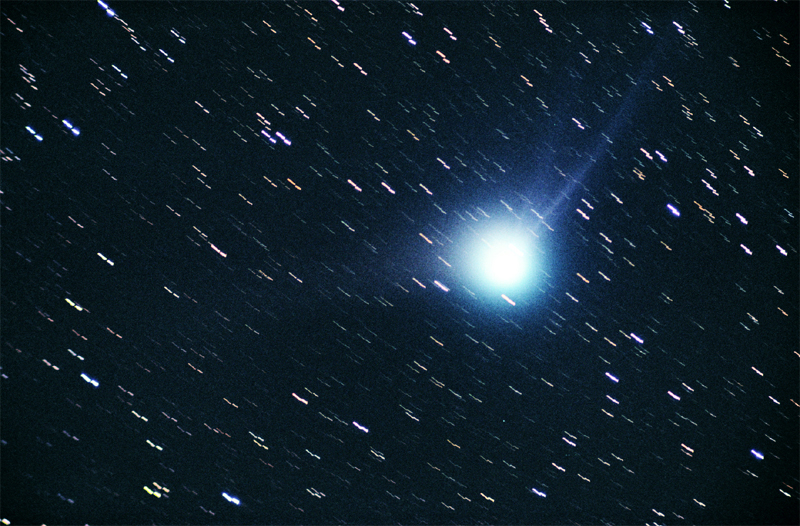
Comet 2004 q4 Machholz, January 2, 2005.
Combination of a 20 minute and a 15 minute exposures. Fuji Superia 200 film
5" f/5 refractor at prime focus.
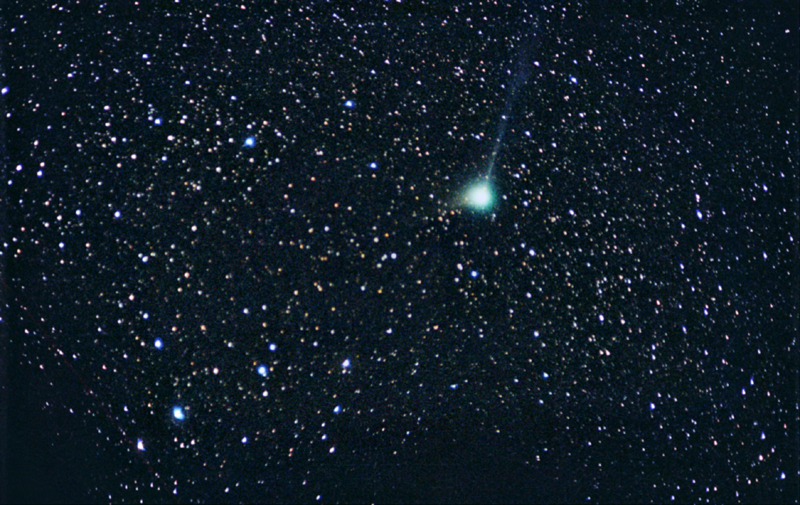
Comet 2004 q4 Machholz, January 3, 2005.
45 minutes exposure. Fuji Superia 200 film
135mm f/2 Olympus lens.
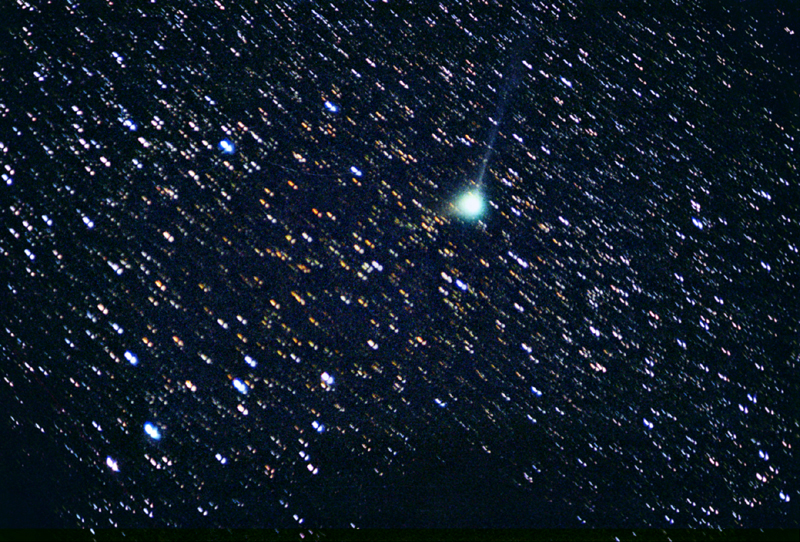
Comet 2004 q4 Machholz, January 3, 2005.
Combination of a 45 minute and a 20 minute exposures. Fuji Superia 200 film
135mm f/2 Olympus lens.
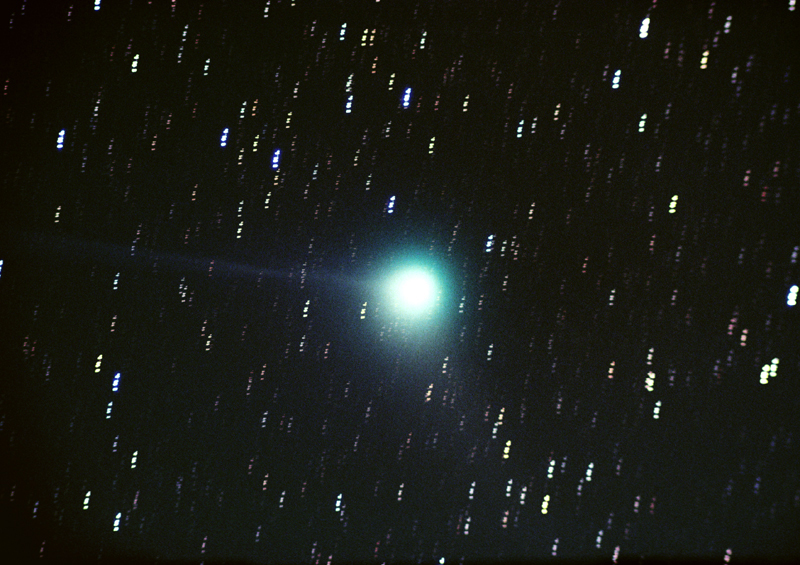
Comet 2004 q4 Machholz, January 3, 2005.
45 minutes exposure. Fuji Superia 200 film
5" f/5 refractor at prime focus.
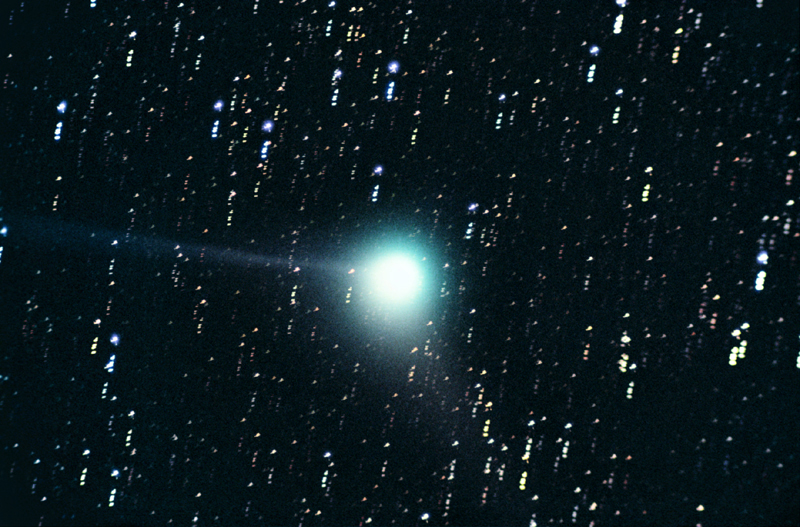
Comet 2004 q4 Machholz, January 3, 2005.
Combination of a 20 minute and a 45 minute exposures. Fuji Superia 200 film
5" f/5 refractor at prime focus.
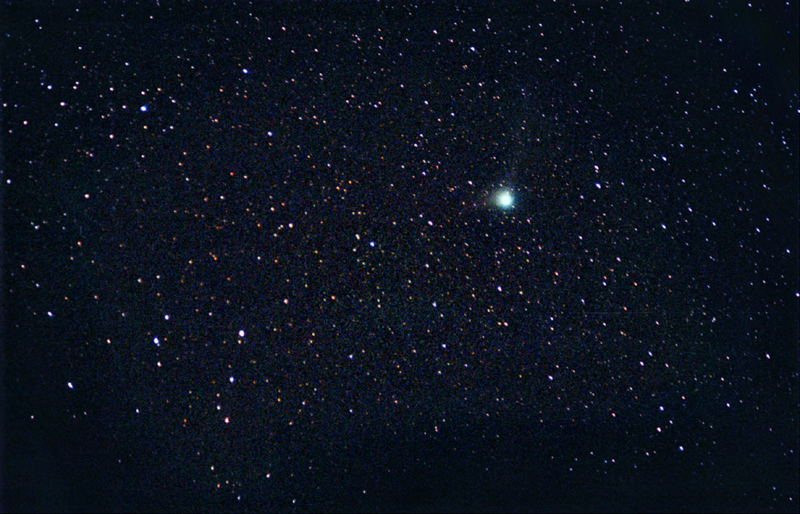
Comet 2004 q4 Machholz, January 4, 2005.
20 minutes exposure. Fuji Superia 200 film
135mm f/2 Olympus lens.
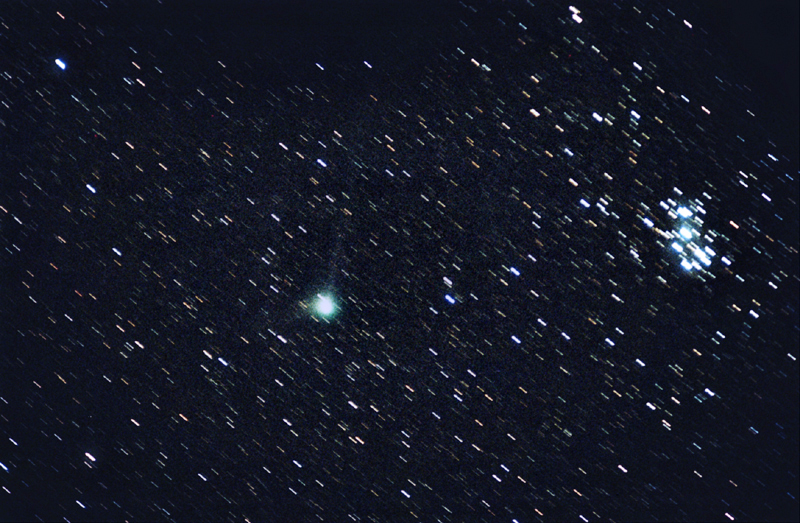
Comet 2004 q4 Machholz, January 4, 2005.
65 minutes exposure. Fuji Superia 200 film
135mm f/2 Olympus lens.
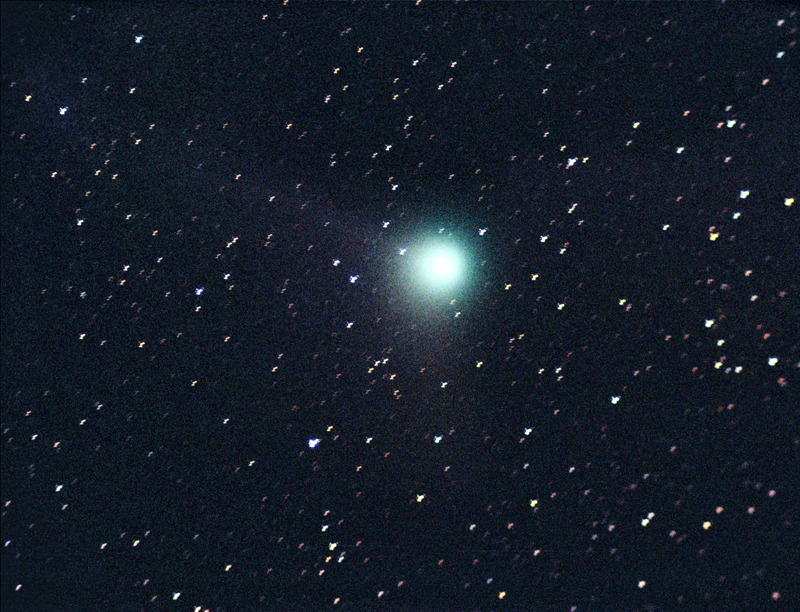
Comet 2004 q4 Machholz, January 4, 2005.
65 minutes exposure. Fuji Superia 200 film
5" f/5 refractor at prime focus.
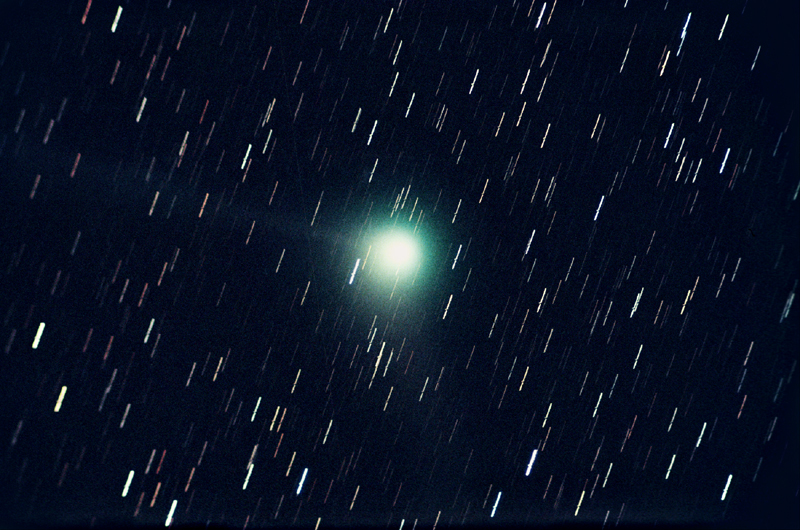
Comet 2004 q4 Machholz, January 4, 2005.
Combination of a 20 minute and a 65 minute exposures. Fuji Superia 200 film
5" f/5 refractor at prime focus.
By January 5, think fog was forming by 9.30 in the evening. While it was still possible to do some photography, the results did suffer. At times I was taking photographs with dew running off the telescope and a limiting magnitude of around 2!!!!!!
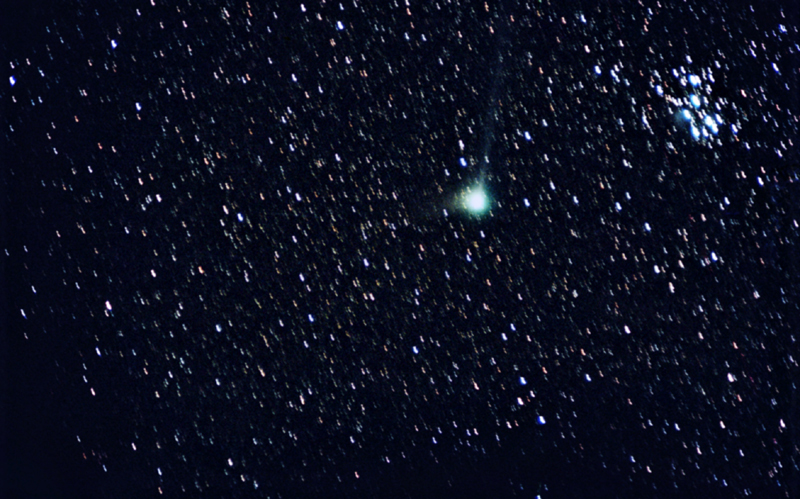
Comet 2004 q4 Machholz, January 5, 2005.
45 minutes exposure. Fuji Superia 200 film
135mm f/2 Olympus lens.

Comet 2004 q4 Machholz, January 5, 2005.
45 minutes exposure. Fuji Superia 200 film
135mm f/2 Olympus lens.
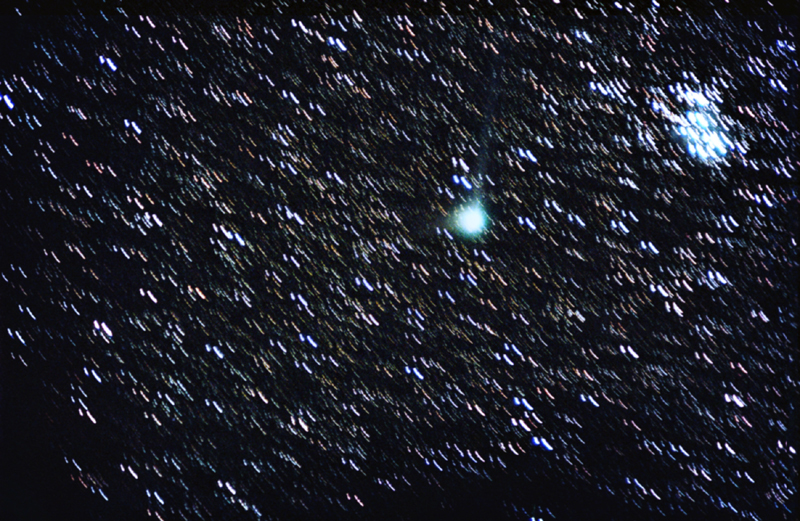
Comet 2004 q4 Machholz, January 5, 2005.
30 minutes exposures taken through thick fog.
Fuji Superia 200 film. 135mm f/2 Olympus lens.
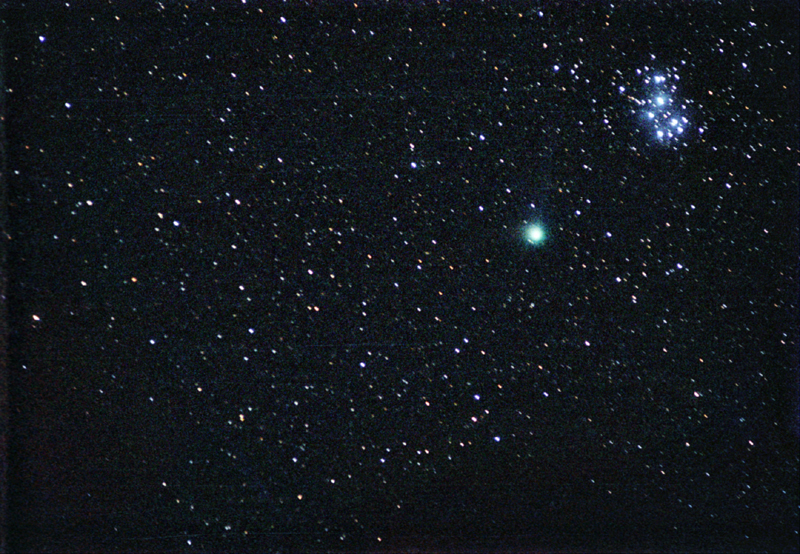
Comet 2004 q4 Machholz, January 6, 2005.
30 minutes exposure, taken through thin fog.
Fuji Superia 200 film. 135mm f/2 Olympus lens.
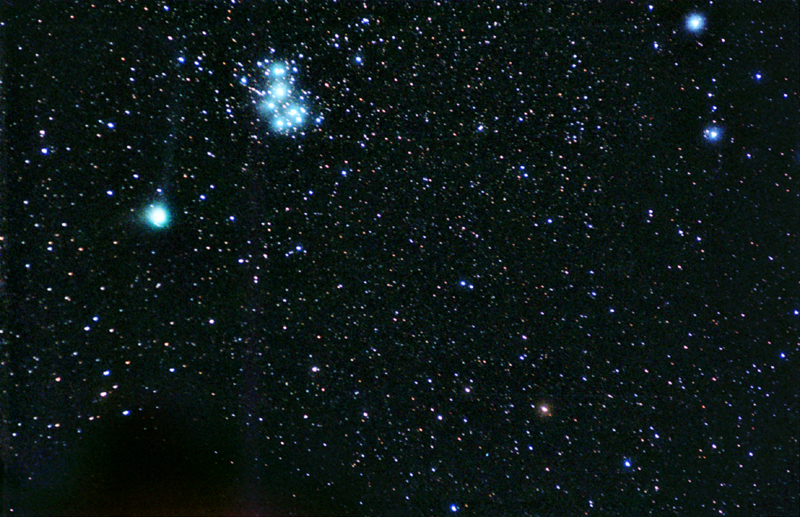
Comet 2004 q4 Machholz, January 6, 2005.
30 minutes exposure, taken through thick fog.
Fuji Superia 200 film. 135mm f/2 Olympus lens.
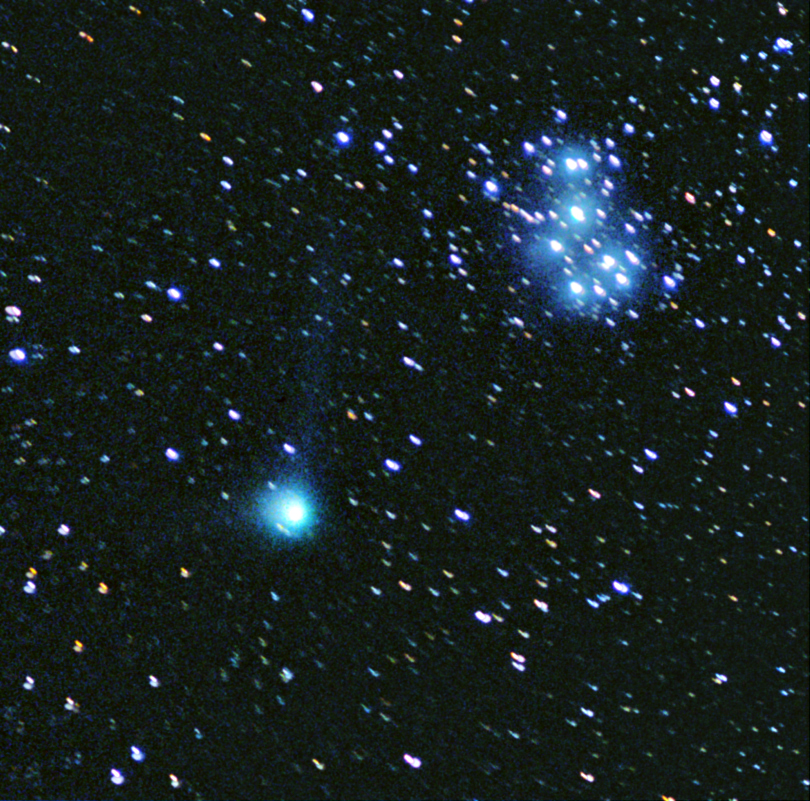
Comet 2004 q4 Machholz, January 6, 2005.
Combination of a 40 minute and a 34 minute exposures, taken through thick fog.
Fuji Superia 200 film. 5" f/5 refractor at prime focus.
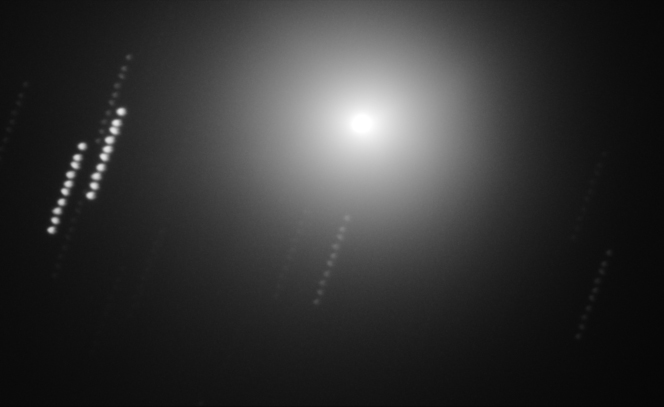
Comet 2004 q4 Machholz, January 6, 2005.
Combination of 10, 1 minute images. SBIG ST-8E CCD.
18" f/10.5 R-C cassegrain at prime focus.
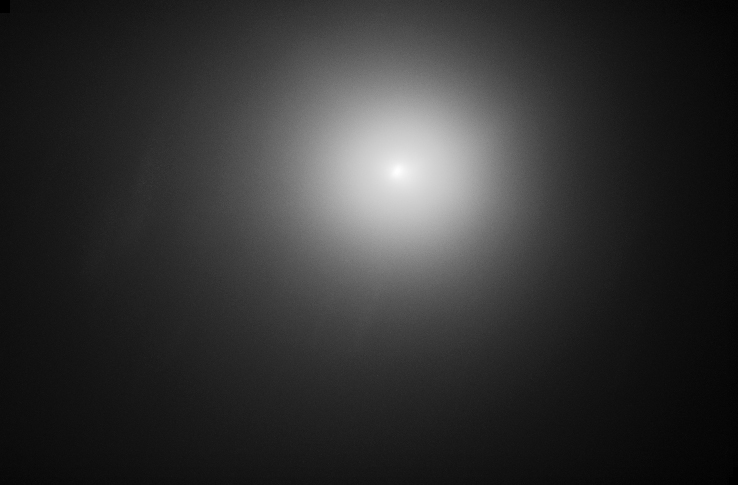
Comet 2004 q4 Machholz, January 6, 2005.
The same image as above, combined with a median filter to minimise the stars. This gives a better impression of the view through a telescope.
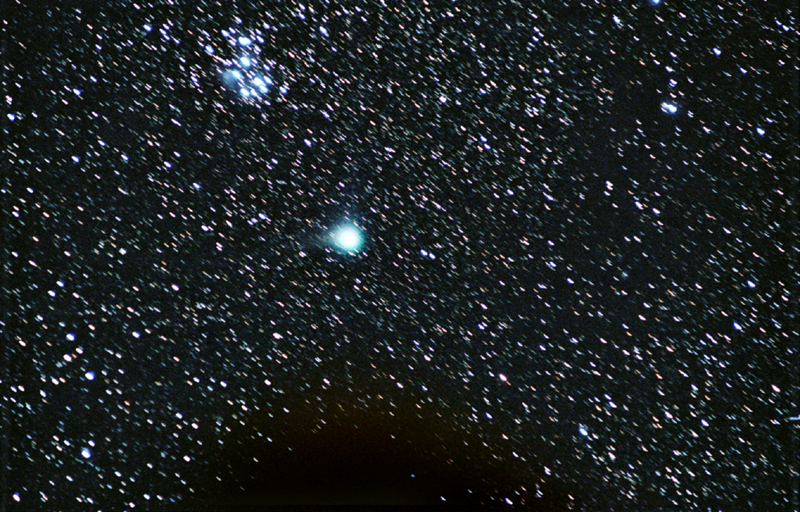
Comet 2004 q4 Machholz, January 8, 2005.
28 minutes exposure. Fuji Superia 200 film.
135mm f/2 Olympus lens.
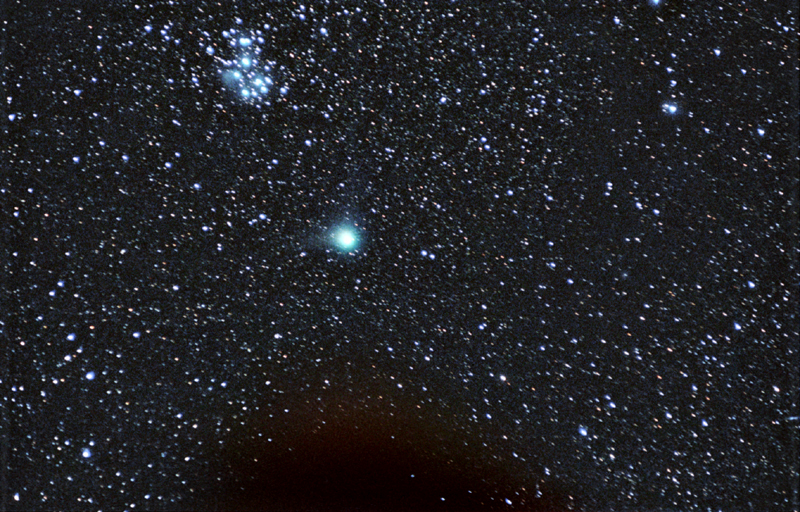
Comet 2004 q4 Machholz, January 8, 2005.
Combination of a 28 minute and a 55 minute exposures.
Fuji Superia 200 film. 135mm f/2 Olympus lens.
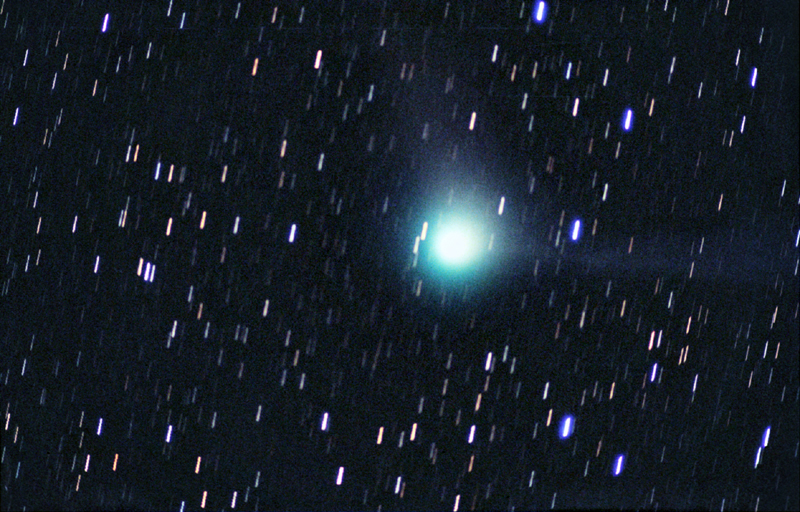
Comet 2004 q4 Machholz, January 8, 2005.
28 minutes exposure. Fuji Superia 200 film.
5" f/5 refractor at prime focus.
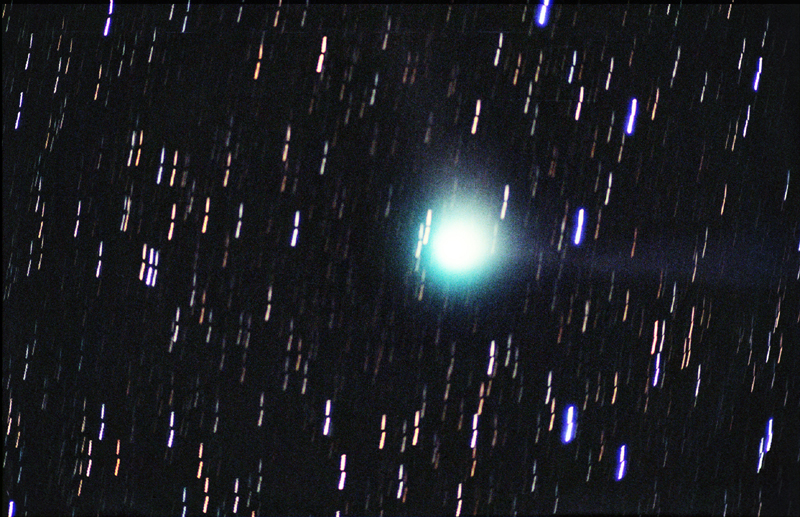
Comet 2004 q4 Machholz, January 8, 2005.
Combination of a 28 minute and a 55 minute exposures. Fuji Superia 200 film.
5" f/5 refractor at prime focus.
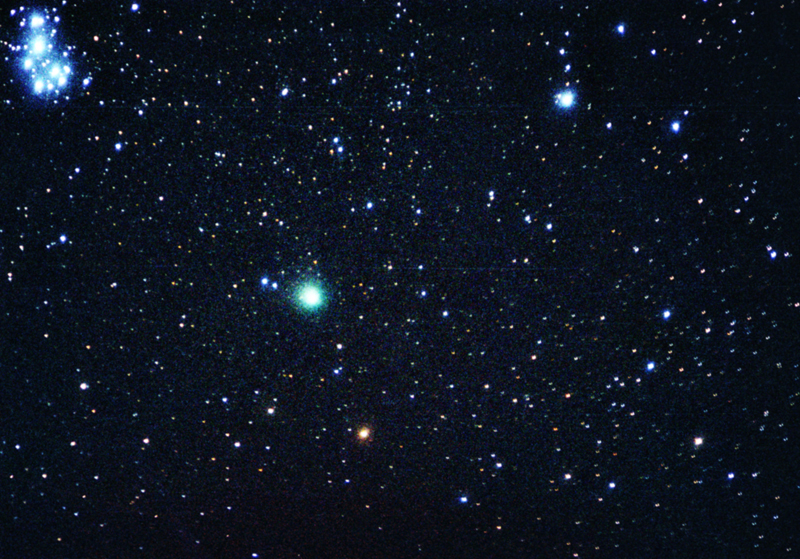
Comet 2004 q4 Machholz, January 9, 2005.
Combination of a 20 minute and a 10 minute exposures, taken through thick fog.
Fuji Superia 200 film. 135mm f/2 Olympus lens.
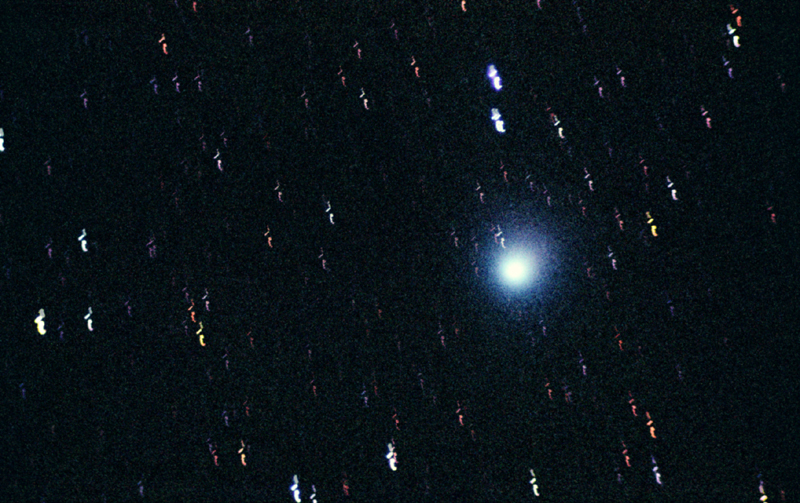
Comet 2004 q4 Machholz, January 9, 2005.
Combination of a 20 minute and a 10 minute exposures, taken through thick fog.
Fuji Superia 200 film. 5" f/5 refractor at prime focus.
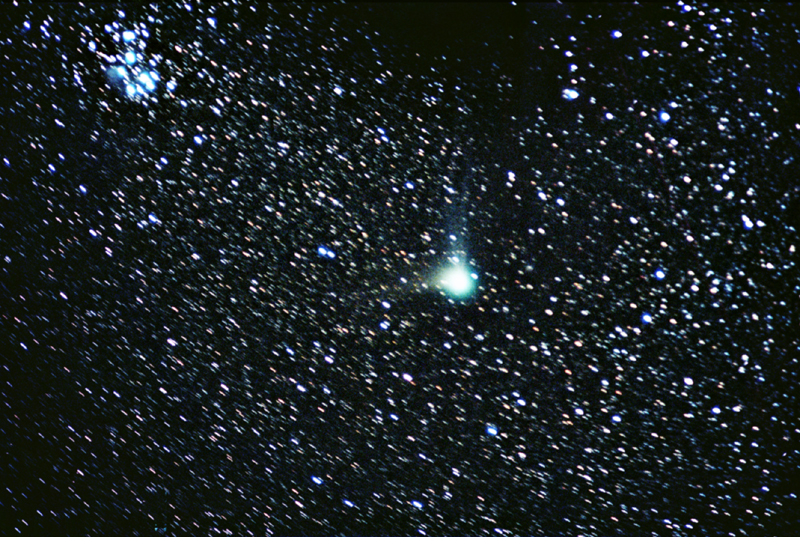
Comet 2004 q4 Machholz, January 10, 2005.
44 minutes exposure.
Fuji Superia 200 film. 135mm f/2 Olympus lens.
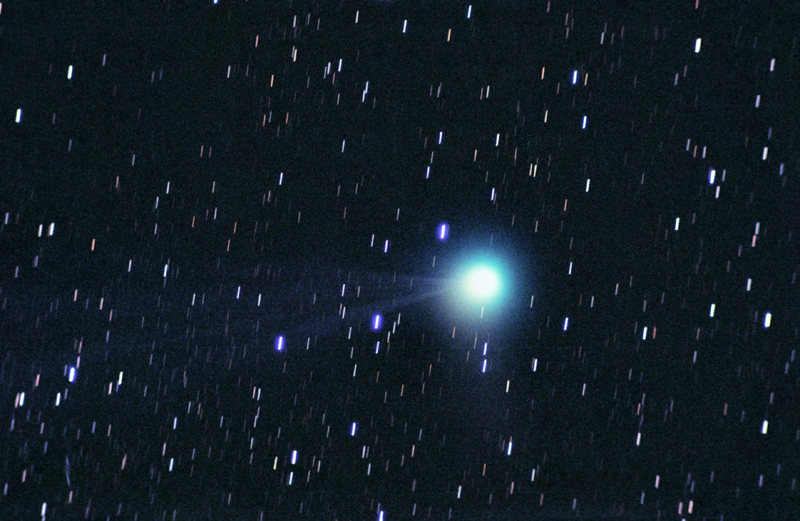
Comet 2004 q4 Machholz, January 10, 2005.
Combination of a 44 minute and a 30 minute exposures.
Fuji Superia 200 film. 135mm f/2 Olympus lens.
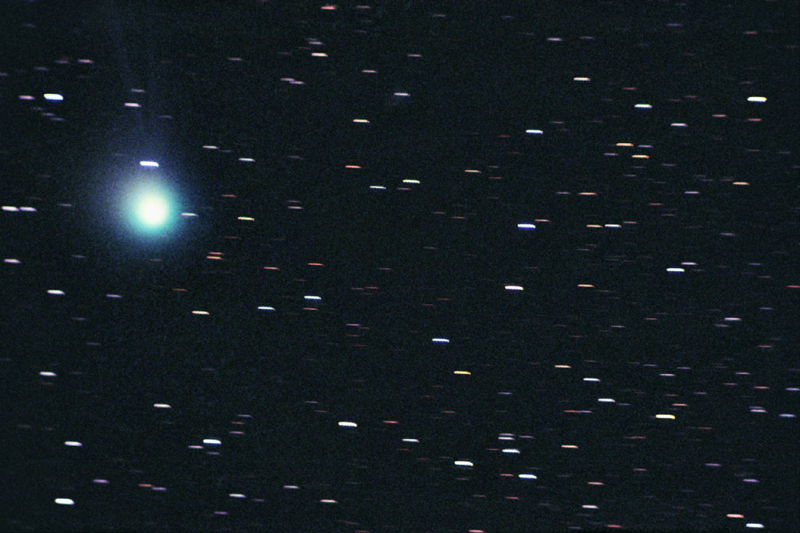
Comet 2004 q4 Machholz, January 10, 2005.
44 minutes exposure.
Fuji Superia 200 film. 15" f/5 refractor at prime focus.
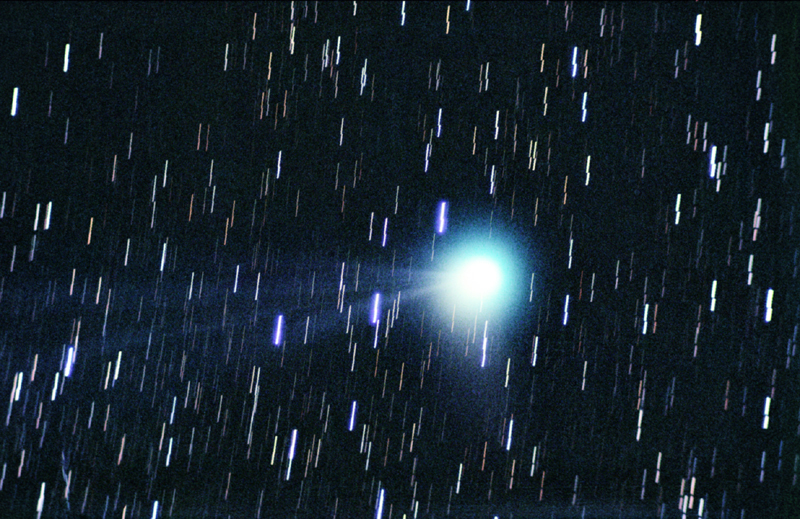
Comet 2004 q4 Machholz, January 10, 2005.
Combination of a 44 minute and a 30 minute exposures.
Fuji Superia 200 film. 5" f/5 refractor at prime focus.
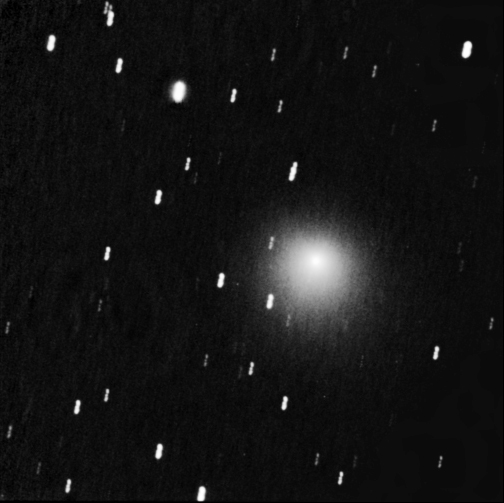
Comet 2004 q4 Machholz, January 16, 2005.
Combination of 5, 3 minute images. SBIG ST-9E CCD.
16" f/10 schmidt-cassegrain with f/6.3 focal reducer.
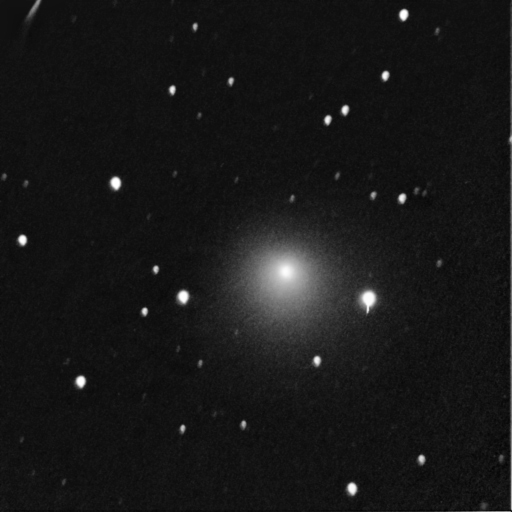
Comet 2004 q4 Machholz, January 16, 2005.
Combination of 3, 3 minute images. SBIG ST-9E CCD.
16" f/10 schmidt-cassegrain with f/6.3 focal reducer.
The comet was still observable the following year, although by then it was just a shadow of its former glory.
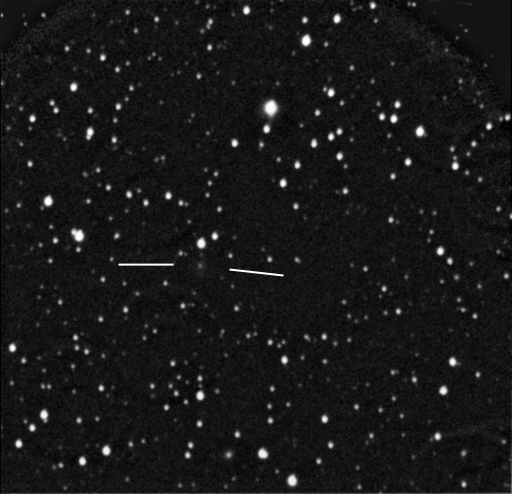
Comet 2004 q4 Machholz, April 2, 2006.
Combination of 5, 3 minute images. SBIG ST-9E CCD.
16" f/10 schmidt-cassegrain with f/6.3 focal reducer.





































